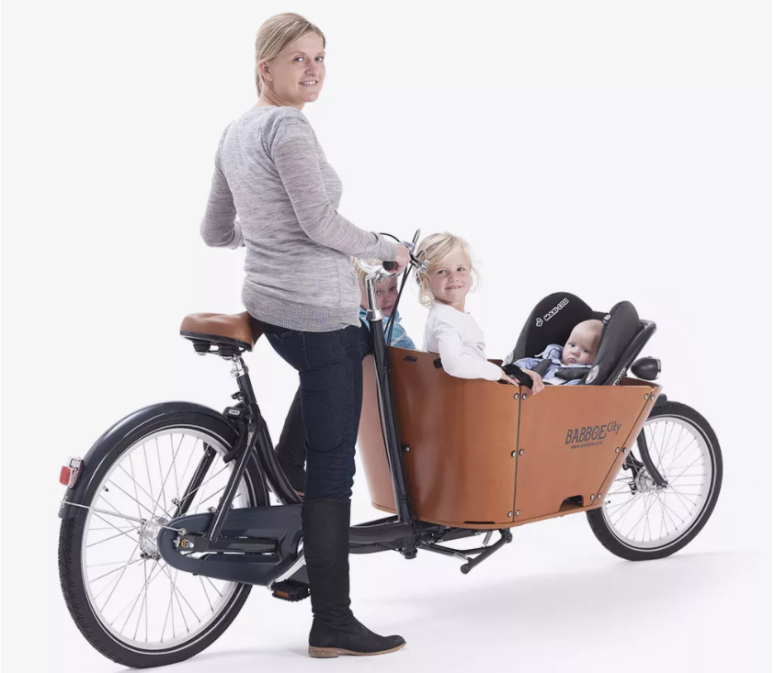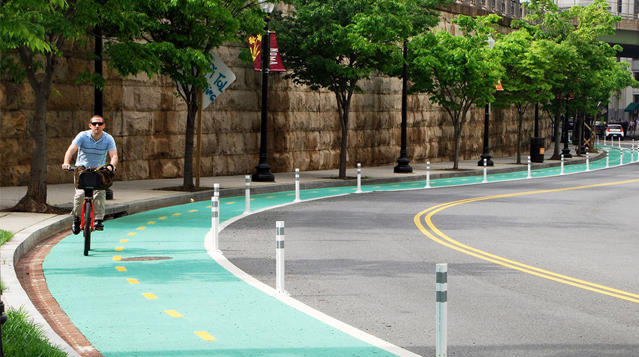


There are many reasons to include cycling infrastructure in Jamaica’s roadways. The greatest of which are that it is good for the safety of the people and the health of the environment. In 2015, Jamaica, along with many other countries, committed to working towards the UN’s Sustainable Development Goals, SDGs. A few of these goals include good health and well being for all citizens, combat climate change, and make cities inclusive, safe, resilient, and sustainable. Creating safe and sustainable infrastructure is a solution to all of these goals. Adding cycling infrastructure is not jut good for those looking to add cycling to their life or routine but also for other motorists. According to Barbara McCann, USDOT director of Safety, Energy & Environment, bicycle infrastructure “reduces the frequency of crashes. It calms traffic, which makes streets less chaotic and safer for everyone.”


- From the MTW Road Safety Unit.
According to the Ministry of Transport and Mining Road Safety Unit, in Jamaica roughly 300-400 people die from motor-vehicle accidents each year, with 30% percent of those fatalities being pedestrians and cyclists. That percentage would probably be greater if there were more cyclists on the road. But many people, citizens and tourists alike, have expressed feeling unsafe on a lot of Jamaica’s roads, whether they were walking or in a motor-vehicle. It is important to create safe streets for all modes of transportation, but now it is important to also address that climate change is real and we have to make way for sustainable modes of transportation and that might not include cars for many. Improving roads, adding proper cycling infrastructure and sidewalks, and lowering speed limits should all be a part of Jamaica’s future urban infrastructure.
The low costs of obtaining and maintaining bicycles combined with safe infrastructure for cyclists can provide many people with a new sense of freedom when it comes to getting around. In moving forward, it is important that there is more equity among people. Cars are seen as a status symbol in Jamaica because of the high cost to purchase and maintain a personal vehicle. And some people may not always be able to afford to take a taxi or bus wherever and whenever. Bicycles can level the playing field and the European Cyclists’ Federation agrees. “The so-called bicycle poverty reduction is a concept that considers bicycles and infrastructure as a way to reduce poverty. Even so, many people still cannot afford to rent or purchase a bicycle. Hence, it is important to implement international programs meant for providing them a help to buy and repair bicycles. These kinds of programs can significantly contribute to achieve the first of the UN-Sustainable Development Goals (SDGs): no poverty.”

- Dutch style bike
Of course there are some pretty expensive bicycles out there, the majority of which are specifically for triathlons and other races. But your average bicycle, like the comfortable Dutch style bike above, that is going to take you from point A to B, is not going to be very expensive. And because a well-built bicycle can last for many years, it is easy to offset costs by purchasing a used bicycle and upgrading it for your needs.
Recently the Ministry of Health started the Jamaica Moves campaign to encourage Jamaicans to engage in daily physical activity to combat obesity and non-communicable diseases, and to live all around healthier lifestyles. Providing cycling lanes would make it easier, for people who are able, to fit a half an hour of exercise into their day. Commute on a bicycle and your daily exercise is taken care of. And if you have children who are old enough, they can also ride to and from school. If your children aren’t old enough to ride their own bicycles there’s a cargo bicycle out there to fit your needs. Unfortunately, cargo bicycles can be expensive, but they pay for themselves when they are hauling 2 children and a week’s worth of groceries without costing you any money in gas and very little in maintenance.


The top 5 health benefits of bicycle riding, according to Harvard University, are it is easy on leg joints because you take the pressure off of your legs and place it on your pelvic bones when sitting in a saddle. Therefore, it is good for “anyone with joint pain or age-related stiffness.” It provides you with a simple aerobic workout, which is good for your heart, brain, and blood vessels. Regular cycling helps build muscles in the butt, hips, thighs and calves. The pedaling motion builds bone through the resistance of pushing and pulling the pedals. And all of these benefits carry over into daily life and make simple things like “balance, walking, standing, endurance, and stair-climbing” easier.
When it comes to the environment, no matter what kind of bicycle you choose to ride, you will have a smaller carbon footprint than if you drove a car instead. Yes, some bicycles are manufactured in far away lands with materials that have to be mined, most notably aluminium, but that is a one time impact on the environment. Of course, it does not excuse the fact that mining is bad for the environment and an exploitation of resources, but it is certainly better than causing pollution in the manufacturing phase and then causing continuous pollution through everyday usage like cars do. And because bicycles don’t require a completely closed body frame that can withstand the impact of high-speed collisions like cars do, they can be made from renewable resources like bamboo. Bamboo is known to be a strong and durable material, and because it grows so quickly and on almost every continent, it is the perfect material for bicycle construction. According to one study, “cycling represents one virtually carbon-neutral form of transport…” The Australian Department of Transportation and Main Roads notes “bikes reduce the need to build, service, and dispose of cars. Cycling 10 km each way to work would save 1500 kg of greenhouse gas emissions each year. Also, …cycling during peak hours would contribute to further emission reductions by reducing congestion and improving traffic flow.” These sentiments can be applied to the majority of cities around the world. No matter how many different ways roads are constructed to improve the flow of traffic, there will always be congestion during peak hours if everyone is using a car. And even if you drive an electric vehicle, there is still a more involved and environmentally damaging process to build and service that vehicle than there is to build and maintain a bicycle. Of course, not everyone can give up their car for a bicycle, there are multiple factors that determine everyone’s choice of transportation. So you should always educate yourself about your options and make an informed decision that is good for your situation and the environment.
There are so many studies (I’ll link a few below) and cycle centric cities (Copenhagen, Amsterdam, Montreal, Antwerp, Tokyo…) that prove that bicycles are the future of transportation. Of course, I can’t discuss each one, but they all tell the same story. Increasing the number of daily cyclists, and decreasing the number of people using cars is better for the environment, better for people’s health even if they aren’t cyclists, and better for the economy. As we move toward a future of renewable energy, larger and more inclusive cities, and a more health-conscious society, we need to look no further than to the bicycle to solve many problems that we all face today. We should bridge the gap between the wealthy and poor and improve the overall health of our people by investing in safe and sustainable cycle infrastructure.
And now for a few links and pictures.
Health benefits of cycling: a systematic review
Dutch Cycling: Quantifying the Health and Related Economic Benefits
THE 20 MOST BIKE-FRIENDLY CITIES IN THE WORLD, FROM MALMÖ TO MONTREAL
Making politicians invest in bicycle infrastructure
What? A bamboo bicycle?Build your own bamboo bike



- Enter a caption

- Infographic designed by Jonathan Hart for the Atlanta Bicycle Coalition.

This is awesome. Lots of facts and figures. I used to be an avid cyclist myself about 30 years ago! I wrote about pedestrians (and trees) being sidelined in a recent blog post. Encouraging cyclists would have so many benefits for Jamaicans – and Jamaica!
LikeLike
Hi! Yes, I read all your blog posts. That post and a recent Facebook post by the Prime Minister about the “improvements” to Constant Spring Rd inspired a line in the most recent piece I wrote, where I speak about roads being widened but still lacking in proper pedestrian sidewalks.
LikeLiked by 1 person
Absolutely! It’s all part of the picture. Politicians love phrases like “sustainable cities” and “sustainable tourism” but they practice the opposite… I am planning to reblog your post later. I used to cycle to and from work in Oxford, many years ago!
LikeLiked by 1 person
Awesome! Thank you. I definitely agree about the politicians. But I think young people are interested and want to know how they can make a difference. For me, that’s just sharing my own knowledge on a singular subject but I’m hoping this inspires people to think outside of the norm.
LikeLiked by 1 person
I really hope so too… Cycling in other countries is not just a “sports” thing or for people who can’t afford a car… It simply makes sense (to me)!
LikeLiked by 1 person
Reblogged this on Petchary's Blog and commented:
My last blog post suggested that our urban planning and development completely sidelines trees/green space and pedestrians. Our city of Kingston is heading in an unsustainable direction. I did not mention bicycles but as a former cyclist myself (I cycled to and from work in the UK for several years, in all weathers!) to me this is a no-brainer, although it seems far from the planners’ and policymakers’ thoughts. Bikes are cheap, have zero carbon footprint, are environmentally friendly and… healthy! But the idea of bike lanes is a non-starter, it seems. As this great blog post – full of facts and figures and links to studies – suggests, bikes are not just for sportsmen, “poor people” or those who can’t afford a car. They simply make sense, on many levels.
LikeLike
Any progress to report in 2020?
LikeLike
Unfortunately, after speaking with officials and average citizens, it seems Jamaica is the kind of place that will only make investments in infrastructure to meet a huge need. So we won’t see infrastructural changes on our roads any time soon as you rarely see anyone biking the way you might in Europe or North America. BUT there is hope. We’ll find a way.
LikeLike